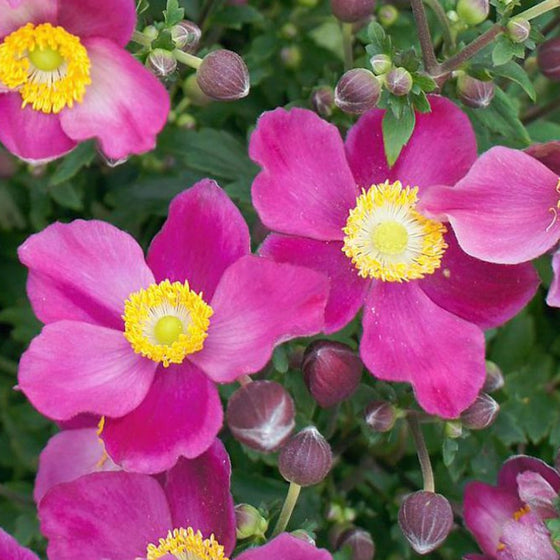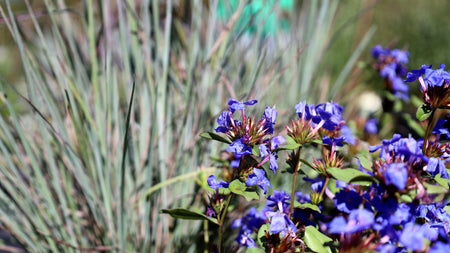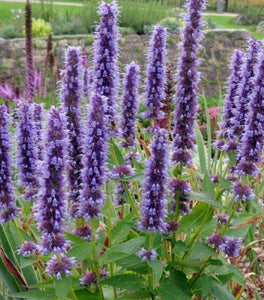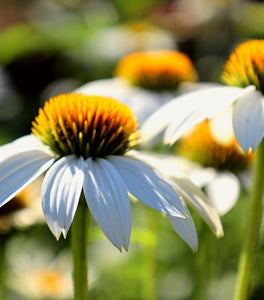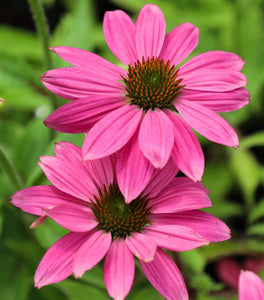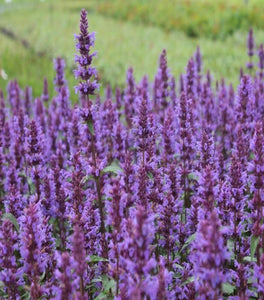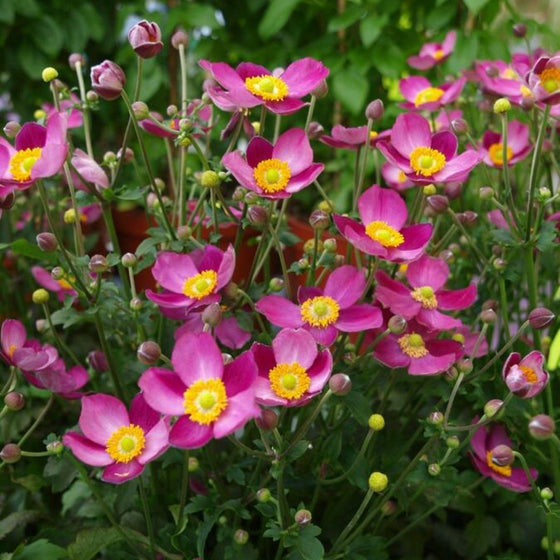
Images Depict Mature Plants
Anemone Pretty Lady Susan Plants for Sale Online
Anemone Pretty Lady Susan is a Japanese Anemone variety praised for its stunning magenta hues and compact growth habit.
These gorgeous perennials bloom from August through September and are best suited for USDA grow zones 5-9.
Although compact in growth, the blooms on the Anemone Pretty Lady Susan are larger than your typically anemone blooms averaging at about 2 inch sized blooms.
These beautiful fall statement plants grow best in full to partial sun in a rich, moist soil medium.

| Hardiness Zone: | 4-8 |
|---|---|
| Mature Height: | 12 to 18 Inches |
| Mature Width: | 1.5 to 2 feet |
| Classification: | Flowering Perennial |
| Sunlight: | Full Sun to Part Shade |
| Habit: | Upright, clump forming |
| Flower Color: | Pink with Yellow Center |
| Flowering Season: | Late Summer through Fall |
| Foliage: | Green |
| Soil Condition: | Any Average Garden Soil |
| Water Requirements: | Water well until established |
| Uses: | Extremely attractive when used in the mixed border, mass planting. Attracts pollinators and hummingbirds |
How to Care for Anemone Pretty Lady Susan
Once you buy an Anemone Pretty Lady Susan, make sure to read about the care instructions that are recommended to keep this plant healthy and thriving.

What Kind of Soil Does my Anemone Pretty Lady Susan Plant Need?
Your Anemone Pretty Lady Susan plant thrives best in rich, organic, well-draining soil conditions. This perennial also prefers to have consistently moist soil to ensure they do not dry out and wilt. If their soil is too dry, this plant will not produce as many flowers as it is capable of blooming. However, it is important not to overwater your perennials. Too much water could cause root rot disease and damage your plant's roots- and could even kill them if not treated quickly. If you live in a cold region of the United States, you should apply a layer of mulch around your plant during the winter to ensure it remains healthy and its soil does not dry out.
What is the Best Fertilizer for my Anemone Pretty Lady Susan Plant?
We recommend feeding your Anemone Pretty Lady Susan in early spring and again in mid-summer after all new growth has hardened off- and it begins to set flower buds. Espoma Bio-tone starter fertilizer is the best product to use at the time of planting. Our ideal fertilizer schedule for you to use is as follows. In the early spring, apply a fertilizer like Espoma Plant-Tone at the recommended rate. Doing so will give your plant a boost of nitrogen potash for healthy foliage and stem growth. Follow this up with an early summer application of Espoma Flower-Tone. Doing so will again provide the necessary nutrients to promote a flush of beautiful flowers. Espoma products are easy to use; sprinkle around the base of the plant and water it in. Be careful with products such as miracle-grow, as these products can burn newly planted plants when not used at the recommended rates. Slow-release fertilizer can help prevent rapid soft growth that is vulnerable to diseases and insects.
How do I Prune my Anemone Pretty Lady Susan Plant?
Remove the old flowers of Anemone Pretty Lady Susan as they become brown and unattractive. This procedure, called deadheading, encourages the Anemone plant to produce new flowers, keeping your plant looking attractive throughout the season. Deadheading also prevents Anemone Pretty Lady Susan from spreading through your yard. Remove the brown stems and leaves to give your plant a healthier and more attractive appearance. Cut back Anemone Pretty Lady Susan to within 6 inches of the ground after it has finished flowering. In colder climates, cut it back as one of the last chores in your garden before the snow flies. In warmer temperatures, cut it back in the spring before it begins to bud.

How Much Sun Does my Anemone Plant Require?
Anemone plants can survive in full sun to partially shaded areas. If you live in a cold region, your plant will thrive in full sunlight, but if you live in a warm region, plant your perennial in an area that receives partial shade. Doing so will allow your plant to have some rest time out of the sun, particularly the hot midday sunlight. Too much bright sunlight could scorch your plant's foliage and flowers.

